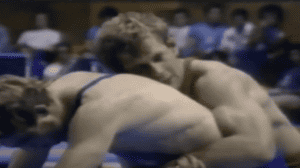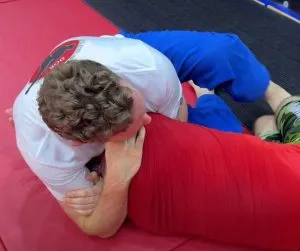Judo is a truly international sport, it is a global martial art practiced by an estimated 50 million people in almost every country and it is growing each and every year. With so many countries competing in Judo, an often asked question is “are the differences between Judo practiced from different countries” and the answer is yes.
Before we get into the differences in judo styles per nation, we need to address that although there are many differences, we must remember that each nation is still practicing Judo under Judo’s ruleset and with the core being the art of Judo that Jigoro Kano developed. The differences are generally within the application and setup of Judo techniques and counter techniques.
Judo Styles Per Country
The IJF (International Judo Federation) currently has 200 member nations within its organization yet there are a few countries that truly are on another level when it comes to the technical level of Judo and overall performance in competition.
When looking at how Judo differs between nations, one easily notices there are small similarities between certain nations usually within the same area yet as similar as certain Judo nations can be in application of their Judo techniques, there are also huge differences in how certain nations approach Judo.
Here are the most significant Judo nations in terms of identifying Judo styles:
Japanese Judo
Japan, the birthplace of Judo and with over 8 million Judo practitioners practicing the way of gentleness it is no surprise that Grapplezilla is going to mention the land of the rising sun as a significant style of Judo and in fact the most significant Judo country in the world.
Japanese Judo is highly technical in nature and truly capitalizes on Kazushi to execute fast and unexpected techniques. Japanese judokas are very fond of traditional grips like the sleeve and lapel, double sleeve, one lapel and even one sleeve and they truly are masters of Kumi Kata (Grips and grip fighting). Japan by far has the most amount of Olympic medals and it’s for a good reason, they live and breathe Judo and truly have perfected the art.
The use of technique and leverage over strength is most apparent within Japanese Judo and the principles of technique and leverage are drilled into the Japanese as they see this approach as the true expression of what Judo is meant to be. It is not uncommon to see Judo techniques that are generally associated with lighter weights being executed at the heavyweight level due to the fact that there is no emphasis on power but purely on technique.
This form of Judo has the least emphasis on power with all emphasis on position, speed, timing, balance and leverage with Japanese Judokas waiting patiently for the perfect position and timing to strike with a flawless technique.
Korean Judo
Korea has one of the best levels of Judo with many top competitors and always producing top level Judo talent and the Olympic medals to prove it.
Korean Judo is also very technical but what really separates Korea from other Judo nations is the speed at which they perform techniques. Koreans are known to use many dropping techniques as well as they frequently use versions of techniques accredited to Korean Judo such as the reverse Seio Nage. It is not uncommon to see a Korean adjustment on Japanese techniques that proves effective in competition.
It must be noted that although Korean Judo looks powerful in nature to the untrained eye, it is not powerful in terms of being forceful or using brute strength but instead, the Koreans use speed, movement and technique in order to create that snap speed power they are known for.
Russian Judo
Russian Judo is known for being strong and powerful it is also known for using unorthodox techniques, very strong grips and very dynamic hip throws.
This style of Judo has been heavily influenced by Sambo as well as many of the former USSR’s cultural wrestling styles and Russian Judokas can achieve an ippon from any grip – no matter how unorthodox the grip.
The Irony of Sambo’s influence on Judo is that Judo has a heavy influence of Sambo as well, the techniques from Sambo that entered the Russian Judo system were more orientated from the Chidaoba techniques that were used in Sambo.
The strong influence of wrestling and the wrestler’s mentality on Russian Judo explains the aggressive nature at which Russians pursue grips and execute techniques.
Russians had a huge advantage in the past when the Judo rule set allowed Judokas to grab the opponent’s gi pants as they could use more wrestling orientated techniques within the ruleset. The Russians truly were formidable opponents when the rules allowed for leg grabs and although the leg grabbing techniques the Russians used are no longer allowed, it is quite common to see Russians practicing these techniques in the dojo.
French Judo
France is considered the best Western Judo country with multiple Olympic and World champions. France has a very intelligent Judo that is based on tactical Kumi Kata and focuses on breaking the posture of the opponent as well they are excellent at preventing opponents from attaining a proper grip.
Much like the Japanese, once a French Judoka attains a good grip and has broken the opponent’s posture they will go for a fast and highly efficient finish.
The French do not use a huge amount of power in their Judo, they prefer to use technique, tactics and timing. A great example of French Judo at its best is Teddy Riner who has dominated at the +100Kg level for nearly a decade, using highly effective and technically superior French Judo to win multiple Judo Olympic and World championships.
Mongolian Judo
Ghengis Khan would be proud of what has transformed into Mongolian Judo, a highly unconventional yet extremely effective style of Judo, Mongolian Judo has been heavily influenced by Bokh (Traditional Mongolian Jacket Wrestling).
Unlike other Far East styles of Judo, Mongolian Judo is noticeably stronger than it’s Japanese and Korean counterparts with Mongolians focusing much more on powering through a technique rather than finishing a technique with finesse and efficiency.
The influence of Bokh on Mongolian Judo can be seen in their unorthodox grips and body positioning. Judo grips such as the over under, double underhooks and the heavy use of grips on the belt.
Mongolians are very proficient with Yagura Nage also known as the front Uchimata, this proficiency is directly related to the influence of Bokh’s underhook grips on Mongolian Judo. It is very common to see big Judo counter throws from Mongolian competitors.
Georgian Judo
One of Grapplezilla’s favorite styles of Judo, Georgian Judo is true power Judo. Sharing many similarities with Russian Judo but even more relentless, Georgian Judo is always exciting to watch and full of dynamic throws, takedowns and counter-techniques. Many of the former USSR’s National Judo competitors came from Georgia and much of Russian Judo has been influenced by Georgians.
Georgian judokas are pure physical specimens, possibly the strongest Judokas in terms of physical strength. Georgian Judo is influenced by Chidaoba (Georgian cultural jacket wrestling) with many high level Georgian Olympic Judokas stating that 80% of Georgian Judo is in fact borrowed from Chidaoba wrestling techniques.
Chidaoba’s major influence on the Georgian style of judo is in it’s unorthodox grips as well as the throws and takedowns off these types of grips. The most famous grip is simply known as the Georgian grip in the Judo world which often leads to the Georgian Lift (Yagura Nage, knee lift throw) which is also know the “Kharabeli” named after Olympic Gold Medalist in Judo – Shota Kharabeli, who was famous for his dominant use of the Yagura Nage off of the Georgian grip in competition.
Georgian Judo is also known for their countering of techniques through the use of simple power moves such as a bear hug and double underhooks into exciting throws and takedowns and it is very common to see Georgian competitors vying for medals in competition.
Brazilian Judo
Brazilian Judo is a beautiful style of Judo that always is pleasing to watch. This style of Judo has a lot of high level Ne Waza (groundwork) as well as it is not uncommon to see flying attacks that result in immediate attack into submission when the fight hits the ground.
Brazil’s national Judo level is very high due to the fact that there were many Japanese who moved to Brazil, currently Brazil has the largest Japanese community outside Japan with 2.1 million Japanese living in Brazil. The fact that such a large Japanese community resides within Brazil naturally created the perfect breeding ground to build a strong national Judo presence.
Another interesting characteristic is the fact that Brazilian’s are excellent at any type of Judo ground combat and it’s for a good reason, Judo in Brazil is very influenced by Brazilian Jiu-jitsu (a grappling style that focuses on ground fighting) thus it is more common to see submissions compared to other styles of Judo. It is not uncommon for high level Brazilian Judokas to also practice BJJ (Brazilian Jiu-Jitsu) and for them to be highly proficient in both arts – a great example of an athlete who is proficient at both arts is the legendary Flavio Canto who is famous for the blend of Judo and BJJ in his dominance of opponents on the ground.
Azerbaijani Judo
Over the past decades the small country of Azerbaijan has been producing high quality and resilient Judokas and has been progressing in global Judo quality each and every year.
Now considered a top Judo country, Azerbaijani Judo is somewhat similar to Georgian Judo in terms of being strength based but with its own flair.
Azerbaijan as a country has been putting a lot of effort and money into producing a world class judo program and it is showing with more and more Azeri’s standing on the podium, Judo is one of the most developed sports in Azerbaijan.
Judo in Azerbaijan is taken very seriously and it has deep cultural roots as Azerbaijan as Judo is influenced by Gulesh (Azeri cultural wrestling) which can be seen in the way Azeri’s counter attack and attack opponents with unorthodox grips and positioning.
Israeli Judo
Relatively new to being considered a top Judo nation, the tiny nation of Israel has been producing world class Judo talent year after year with spectacular performances time and time again.
Israeli Judo can be characterized as a mix of power judo with technique and aggression, especially with any type of hip throw. Israeli Judokas love to work off the sleeve and once a grip is established they power through the move with non stop effort.
This Judo style is unique and exciting to watch and is going to be a true force to reckon with in the years to come.
Cuban Judo
If there was one word to describe Cuban Judo it would be explosive. Cuba produces top quality athletes year and year again, with an explosive and high athletic style that can turn the tables very quickly on an opponent.
Cuban’s have excellent conditioning and have found much success in Judo competitions, they are very technical with a specialized Judo program that builds on years of calculated planning per athlete.
If Judo was a 0-60 drag race, Cuban Judo would be the Lamborghini, Pure power with some finesse while other explosive Judo nations would be a muscle car – all power no finesse.
In terms of training, the Cubans have a very methodological and intellectual approach to training and the positive results can be seen in its medal count at the Olympic games.
In Conclusion
Judo highly differs from country to country and region to region, many times being highly influenced by the cultural wrestling styles of the country.
It is a highly developed grappling martial art, it is an Olympic combat sport but in the end of the day it is what brings people together and prepares them for life, it truly is the gentle way.
If you want more information in Judo Styles per country, we highly recommend checking out a great Judo channel called “Chadi” which is a truly amazing Judo channel with outstanding quality content on Judo and Grappling.




